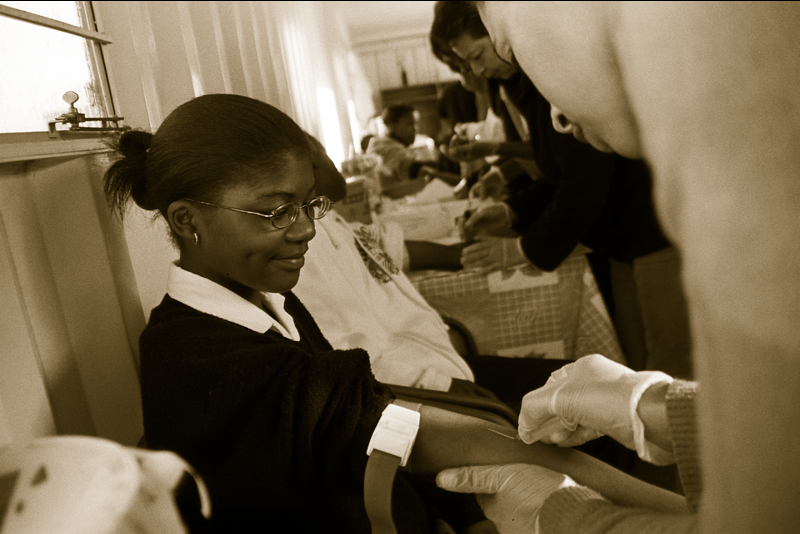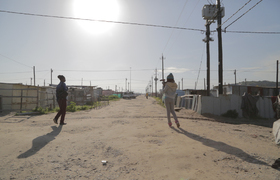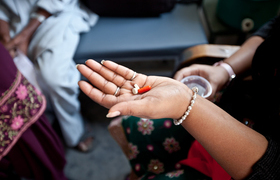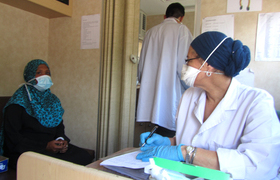UCT scientists strike blow against tuberculosis
17 November 2017 | Story Supplied. Photo Kalli van der Merwe.
University of Cape Town (UCT) scientists are once again at the global forefront of the fight against tuberculosis (TB), with their latest breakthrough offering an unprecedented insight into the progression of the disease in the human body.
In the longer term, this valuable data has positive implications for the design and development of new strategies for diagnosis, vaccination and treatment, says Associate Professor Thomas Scriba, a principal investigator in UCT’s South African Tuberculosis Vaccine Initiative (SATVI), and co-lead author of the study published this month in the respected PLOS Pathogens medical journal.
The latest trial by Scriba and his team, including collaborators from the Centre for Infectious Disease Research (CIDR) in Seattle, USA, follows their 2016 landmark study, which discovered a blood test to predict the likelihood of developing TB as early as 12 months before the disease actually manifested.
“With this latest trial we went much deeper, seeking to analyse the timeline of the immune response in people with latent TB who progress to active disease, both before and during this process,” Scriba explained.
They detected two types of inflammation signaling, or early warning signs:
- At 18 months prior to diagnosis there was elevated activity of immune system signaling molecules that help fight infection, called interferons, in those who progressed to active disease.
- Closer to diagnosis, in these same people there was elevated activity of the complement system, another component of the immune system.
In the third significant finding, the scientists’ analysis of genes in T cells of study participants found that those who later developed active TB also showed signs of immune response suppression.
“This timeline of biological events that occur on the path from infection to disease is very useful as we seek to develop tests to not only identify who will progress to active disease, but also preventive therapies to halt TB before people become sick,” Scriba said.
Global health crisis
The emphasis on early detection of TB comes amid a global health crisis, with more than 3 000 people dying daily from the disease across the world.
In South Africa, up to 80% of adults have signs of infection with the responsible bacterium – Mycobacterium tuberculosis, but only a small proportion will ever develop active disease. The lifetime risk of developing active TB is an average of 10% in those who are infected.
“We seek to develop tests to not only identify who will progress to active disease, but also preventive therapies to halt TB before people become sick.”
The biggest hurdle for prevention efforts is the absence of warning signs, and the long period of disease progression, during which patients unwittingly infect others.
For the 2016 study, the group of SATVI-led scientists studied gene expression patterns in blood samples selected from more than 6 000 teenagers from Worcester, in the Western Cape, following them for more than two years to identify those who did and did not develop TB disease.
For the latest study, Scriba explained that they studied the frozen samples of the youngsters who succumbed to TB, called “progressors”, for purposes of more in-depth analysis to answer questions about the disease pathway.
“We examined all the genes in their blood, as well as more than 3 000 proteins found in the blood, and their white blood cells over almost two years to identify how these parameters in the blood change in the build-up to active TB in these youngsters.
“The results showed a number of different inflammatory processes during this progression, with changes occurring at different times relative to when the disease can eventually be diagnosed,” he said.
Vital step forward
While it will never be feasible to treat 80% of the population with preventive TB therapy, even though they may well all be infected with the bacterium, this latest research takes efforts to identify those at real risk of active disease a vital step forward, Scriba added, saying that their work in this regard was ongoing.
The SATVI team has been awarded generous funding of US$10 million and is currently conducting the two-year Correlate of Risk Targeted Intervention Study (CORTIS) at four different sites across South Africa to evaluate whether targeted preventive therapy will stop infected people from developing TB.
They are currently halfway through screening 20 000 people with a view to finalising the 3 200-strong enrolment.
“The trial participants will then be randomised to either receive preventive therapy, or a placebo,” Scriba said.
The trial is being led by Professor Mark Hatherill, the director of SATVI.
Read the full study in PLOS Pathogens...
 This work is licensed under a Creative Commons Attribution-NoDerivatives 4.0 International License.
This work is licensed under a Creative Commons Attribution-NoDerivatives 4.0 International License.
Please view the republishing articles page for more information.










